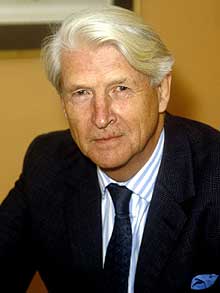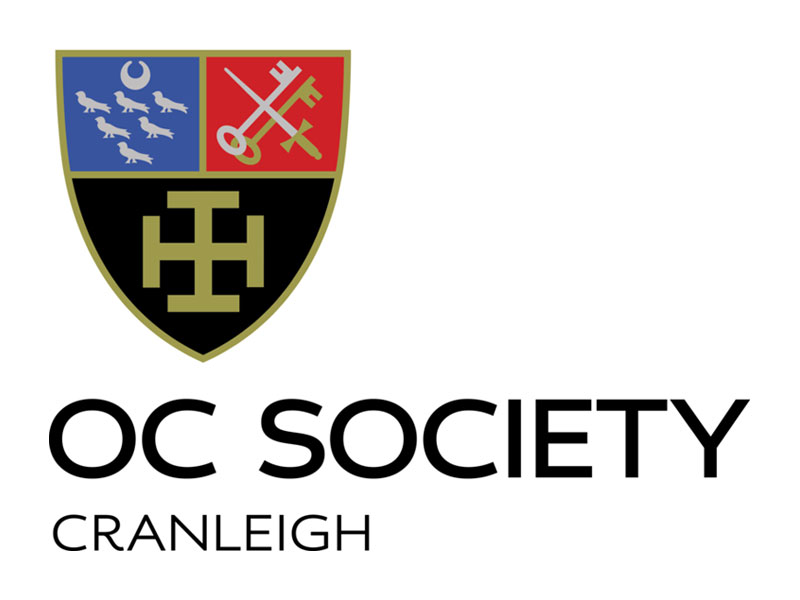Sir Peter Wakefield, who died on December 1 aged 88, served as Britain’s Ambassador in Beirut in the 1970s during the Lebanese civil war, though he may well be remembered more for what he did in retirement than as a distinguished diplomatist.
Soon after leaving his last post, as Ambassador to Belgium, he was appointed director of the National Art Collections Fund, the organisation that raises money to help British museums to buy works of art. From its then modest offices in John Islip Street, he turned the NACF into a campaigning, outward-looking organisation, vastly increasing its membership and funds and thus its effectiveness. The numerous works of art he helped save from being exported included Hans Holbein’s Lady with a Squirrel and a Starling, which the fund (with others) helped the National Gallery to purchase in 1992.
The masterpiece had been put up for auction by the Marquis of Cholmondeley in a reported attempt to beat the expected introduction of a “list of national treasures” that would be refused an export licence by the government.
The proposed list, an act of “thinking out loud” by the Tory Arts Minister, Tim Renton, caused great grief in the arts world and Wakefield was relieved when, shortly before his retirement from the NACF in 1992, the new Heritage Secretary, David Mellor, decided to bury the whole concept.
During his career in the Diplomatic Service Wakefield faced his most difficult and challenging posting when he was sent in 1975 as Britain’s Ambassador to Beirut. The civil war in Lebanon started just three months after he arrived and the situation rapidly deteriorated, with fighting often taking place within a few hundred yards of the ambassador’s residence, which Wakefield refused to quit.
His movements were necessarily curtailed for security reasons and he once had to be smuggled back into Lebanon via Damascus by friendly guerrillas. However he took care to protect the residence’s art collection from damage, returning a valuable 19th-century Edward Lear oil painting of Beirut, with its minarets, cypresses and mountains in the background, to the government art collection in England for safekeeping.
Wakefield’s wife Felicity stayed with him for much of this testing time and by maintaining as normal a life as possible the Wakefields and the embassy staff were a comfort to an understandably nervous British community. Wakefield received a knighthood in 1977 while still in Beirut, before being posted elsewhere in 1979.
Peter George Arthur Wakefield was born on May 13 1922 and educated at Cranleigh School and at Corpus Christi College, Oxford. He served in the Army from 1942 to 1947, being posted to the military government in Eritrea for the last year of his service.
On demobilisation he worked for the Hulton press for two years before entering the Diplomatic Service in 1949. His first assignment was to the Middle East Centre for Arabic Studies, a Foreign Office-run school for the teaching of Arabic, then situated in Lebanon, and widely believed by many Arabs to have been an institution for the training of British spies. It was while there that he met Felicity Maurice-Jones, who was working with Palestinian refugees in the country. They married in 1951.
From Lebanon Wakefield was posted as second secretary to Amman, Jordan, where he served until 1953, when he returned to the Foreign Office in London.
In 1955 he was sent to Nicosia as First Secretary to the British Middle East Office and the following year went to Cairo as commercial secretary. He attended the Administrative Staff College at Henley in 1957.
Commercial work had by then become respectable as well as important in the service and Wakefield had postings to the commercial staff of the embassies in Vienna (1957-60) and Tokyo (1960-63). He served again in London, from 1964 to 1966, when he returned once more to the Arab world as consul-general and Counsellor in Benghazi, Libya. He was there in 1969 when Colonel Gaddafi launched his bloodless coup against Libya’s King Idris.
In 1970 Wakefield returned to Tokyo as Counsellor and, later, minister for economic affairs. At this time the British Overseas Trade Board was anxious to increase Britain’s trade with Japan and in 1973 Wakefield’s by now considerable experience both of commercial work and of the Japanese made him the ideal choice for the post of special adviser on the Japanese Market which he held, on secondment, for two years until his appointment as ambassador to Beirut.
Wakefield’s last post, as Ambassador to Belgium, was a welcome contrast to the strains and alarms of Beirut, its problems being of a more peaceable nature. He regretted the way in which, as he saw it, British politicians and the media seemed incapable of weighting up the pros and cons of Britain’s membership of the EU in any kind of rational way.
The British, he felt, had a tendency to “stumble” over tiresome but peripheral measures and petty interferences while ignoring the fact that the country needed the “continental clout which Europe can provide” in such vital areas as international trade negotiations and regulation, climate control, free movement of skills and so on. “Is it impossible to get some unemotional balance into this vital debate,” he asked in a letter to The Times, “or will the positive always be considered unnewsworthy and shunned?”
Tall and handsome, Wakefield combined the dignity of a diplomat with an elegant sartorial style which contained a sufficient hint of the bohemian to create confidence in the artistic circles into which he moved after his retirement in 1982.
In addition to his work for the NACF, he was, among other roles, chairman of the Richmond Theatre and chairman of the judges of the first £30,000 Jerwood Prize for British painting (in 1994, when it was awarded to Craigie Aitchison). He also worked as an art consultant and in 1996 led a small group which founded Asia House, which aims to promote greater cultural understanding of Asia.
In 1965, in what he described as a “moment of madness” Wakefield and his wife bought, for £12,500, La Molineta, a tumbledown hamlet on the winding road that climbs from the Spanish seaside town of Nerja, just under 40 miles east of Malaga, to the village of Frigiliana.
Over the next 40 years on holidays and breaks between diplomatic postings, they restored the hamlet from a “muddle of ruins” with a defunct sugar mill, eventually selling or letting out the houses to fund further restoration. In later life they built a new home in 16 acres of olive and almond trees near Periana, a village famous for its olive oil.
In addition to his knighthood, Peter Wakefield was appointed CMG in 1973. He is survived by his wife and by their four sons and a daughter.

